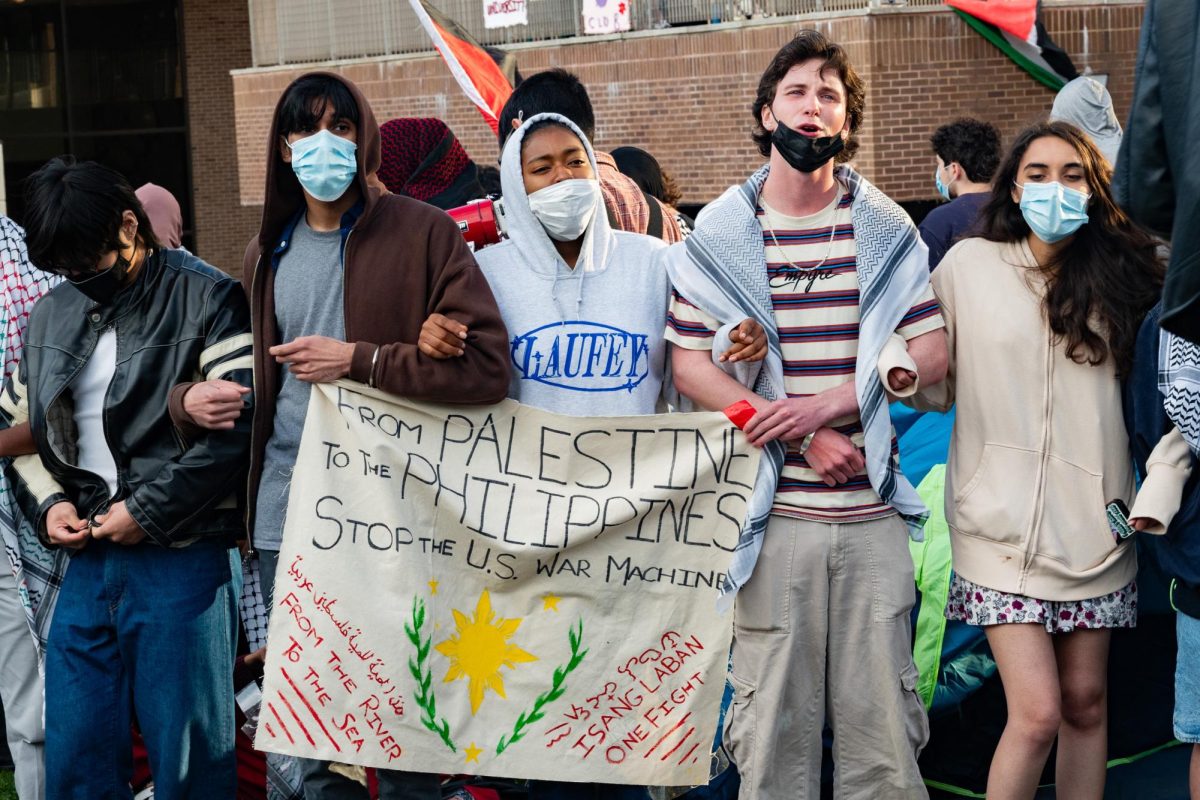Beginning in the fall of 2011, Stony Brook students may have the option of enrolling in classes at the latest addition to the university’s growing collection of satellite locales: a brand new campus in Songdo, South Korea.
Unlike at its campuses in Southampton, N.Y. and New York City, however, Stony Brook’s residence halls and facilities in Songdo would be constructed adjacent to those of up to 14 other universities from the United States and Italy, according to The Chosun Ilbo, a Korean newspaper. Together, these overseas branches would make up a ‘Global University Campus’ of some 10,000 students who would live and attend class in the Songdo International University and Research Cluster of Korea’s Incheon Free Economic Zone (IFEZ). The IFEZ is a several hundred billion dollar international business, technology, academic, and tourism area being developed about 40 miles west of Seoul on Korea’s Yellow Sea coast by the South Korean government to promote the country’s economic growth.
‘This is an once-in-a-lifetime opportunity,’ Brent Lindquist, the deputy provost of Stony Brook University, said. ‘Building a campus in South Korea will increase the university’s international footprint and reputation, which fits with [State University of New York Chancellor] Nancy Zimpher’s drive to broaden SUNY’s international appeal. It will also open study abroad opportunities for Stony Brook students in Asia, and help attract international students of high academic caliber to Stony Brook.’
In recent years, there has been a notable push by American universities to establish satellite campuses abroad, usually in wealthy Middle Eastern nations like Qatar and the United Arab Emirates and also as part of an effort to raise each school’s international prestige. The majority of universities that do so are private institutions with large financial endowments, such as New York University, Cornell, Northwestern, and Georgetown, though some public universities have begun to follow suit. University at Buffalo is the only SUNY university to currently operate an overseas branch, which is located in Singapore.
Though Stony Brook’s administration has not yet given its final approval on the project, Stony Brook is the closest to signing a commitment to its implementation with the South Korean government out of the universities who have expressed interest in expanding in Songdo, which includes North Carolina State University, George Mason, Carnegie Mellon, John Hopkins, and Boston University. Significant steps already taken by the University were signing a preliminary ‘Memorandum of Understanding’ with the South Korean government, accepting half of a promised $1 million payment for planning, retaining legal representation in South Korea, and completing architectural designs for the buildings, among others.
A resolution passed by the SUNY Board of Trustees in May 2009 granted Dr. Samuel Stanley Jr., the president of Stony Brook University, and officials designated by him authority to conduct these measures towards a partnership campus between Stony Brook and the South Korean government. According to university documents that were used to brief the University Senate about Stony Brook Songdo at its Sept. 14 meeting, planning discussions had started as early as December of last year.
‘The idea to attract great research universities was the South Korean government’s. Stony Brook was approached first because of our strong alumni ties in South Korea,’ Lindquist said. He was quick to highlight that no dollars spent by New York taxpayers or tuition paid by students at Stony Brook’s existing campuses could be put toward the cost of the new Songdo campus. Instead, he said Songdo’s cost will be provided for by the out-of-state tuition paid by students enrolled there (approximately 1500-2000 students per year), separate endowments set up for the school, funds generated by research conducted in South Korea, and support from the South Korean government (which has agreed not to charge rent on the facilities and to cover operation costs during the first five years).
‘This is not something we could afford to do on our own,’ Lindquist said. ‘The assistance and cooperation we have from the South Korean government is what makes SBU Songdo possible.’
Initially, many of the faculty and student members of the University Senate expressed shock when they learned how far along the plans were to open a campus in South Korea, especially those who had not been informed of the project prior to the September University Senate meeting.
‘I think there was a lot of frustration because they kept the planning secret for a long time, and none of us had any say in this. We feel disenfranchised,’ said David Mazza, vice president of Communications and Public Relations for the Undergraduate Student Government (USG).
Jasper Wilson, the president of the USG, said that progress had since been made towards the dissemination of information about SBU Songdo to the student leadership and the campus community.
‘The University Senate asked for more information on Songdo, and since then the administration has been coming forward and being much more open about it,’ Wilson said. ‘We were told there would be no financial burden to Stony Brook, and as long as that’s true, I can’t see any negatives to the expansion.’
But University Senate President Michael Schwartz, a professor of sociology, said he still had several concerns regarding the allocation of Stony Brook’s already thinly-stretched staffing resources for Stony Brook Songdo.
‘I’m not sure how the scheme of having 100 faculty rotating between Stony Brook and Korea will work,’ Schwartz said, addressing the current proposal for some Stony Brook professors from the departments that will offer programs in Songdo ‘- primarily computer science, electrical and computer engineering, and business ‘- to teach for a semester or year in Songdo, supplemented by new hires in Korea who would also complete stints in Stony Brook. ‘I don’t think professors could break off their research or transfer it abroad that easily, and grad students aren’t going to want to see their advisors or engineering students their professors disappear overseas. Lack of rotation could be very problematic, raising questions of how integrated is the relationship between the two universities and how equal are their faculties. This is going to require a lot of very careful consideration.’
One professor who was involved in negotiations with the administration relating to staffing in Songdo, Sangjin Hong, professor of electrical and computer engineering, was slightly more optimistic about the feasibility of the plan.
‘I think it could be a benefit in terms of Korean government funding for research, extra labs, and the availability of partnerships with the other American universities in Songdo. I think the ECE faculty is willing to take their sabbaticals in South Korea; there is positive opinion that this will increase Stony Brook’s prestige,’ Hong said. ‘A more concrete plan for the rotation is evolving as we have more meetings.’
Other questions that have been pressed to the Stony Brook administration relate to the tangible benefits of the South Korea campus for the students in Stony Brook.
Julia Link, a 21-year-old comparative literature major and member of the University Senate, said she was unsatisfied by what she characterized as Deputy Provost Lindquist’s failure to adequately respond to this query when she posed it to him during the September University Senate meeting.
‘When I first heard that we were going to open a satellite campus in South Korea, I thought this was a terrible waste of the school’s limited resources,’ Link said. Link thereafter gained a private audience with Eric Kaler, the provost of Stony Brook University, to discuss the plan. ‘After speaking with Provost Kaler, I no longer think the Songdo project will harm Stony Brook. I even see the potential for benefit because he assured me that there will be no decrease in the numb
er of professors at Stony Brook with South Korean professors coming here, and that SBU Songdo will pay for itself and may bring research funding in,’ Link said. ‘I am still reserving judgment though to see how it ends up affecting Stony Brook students.’
There are over 2,000 students at Stony Brook from Asian countries according to administration statistics, 549 of whom are from Korea and 895 from China. Lindquist asserted in his presentation to the University Senate that these students would be most likely to wish to enroll in courses in Songdo. This assumption, however, may not be so straightforward if current figures for Stony Brook’s study abroad programs in South Korea are any measure of the level of interest on campus. The Office of International Academic Programs reports that only five to 15 students usually go on study abroad programs to South Korea each semester. The number of exchange students from South Korea is a little higher: there were 34 for the fall 2009 semester.
Stony Brook students have the option of studying at eight different institutions in South Korea at which courses are taught in English, including Seoul National University and Yonsei University, both of which are higher than Stony Brook on the U.K. Times Higher Education 2009 online ranking of the top 200 universities in the world.
Joanne Choi, the president of Stony Brook’s Korean Student Association, said she thought the Songdo campus was a ‘really great idea,’ to the extent that it would facilitate South Korean students being able to study in the United States. On other hand, she was not convinced that the best Korean student-scholars would want to complete their degrees in South Korea or that Korean-American students would want to return to their country of birth or ancestral homeland for their college years.
‘In Korea, it is really important to go to abroad to college, especially to the United States. My roots are here now and I wouldn’t want to go back. I’m not sure that a degree from South Korea would be worth as much,’ Choi said.












